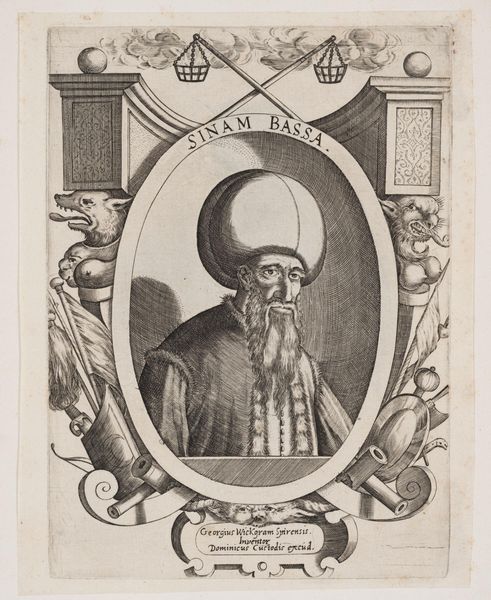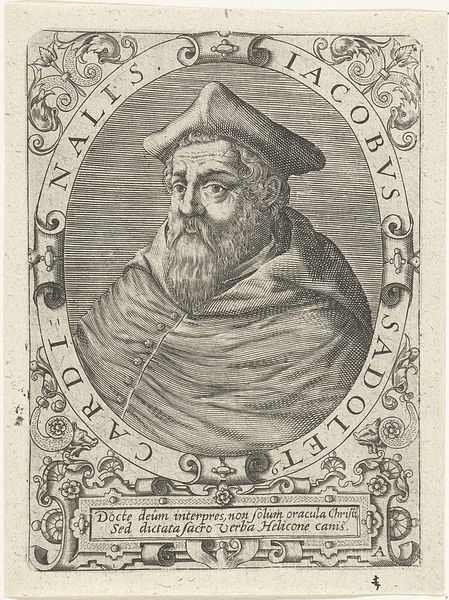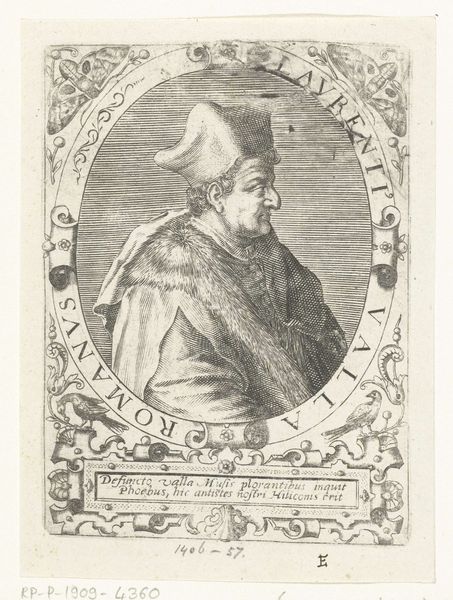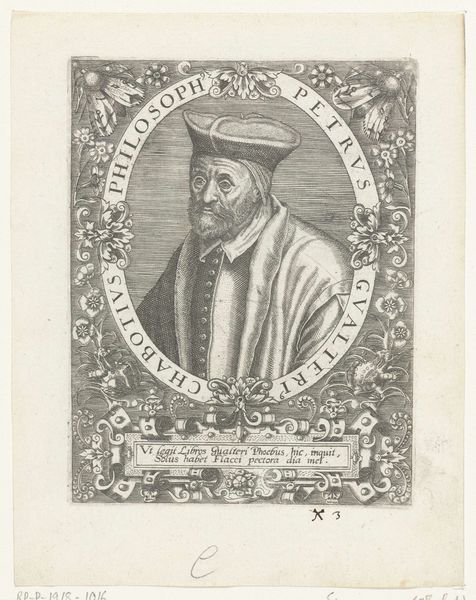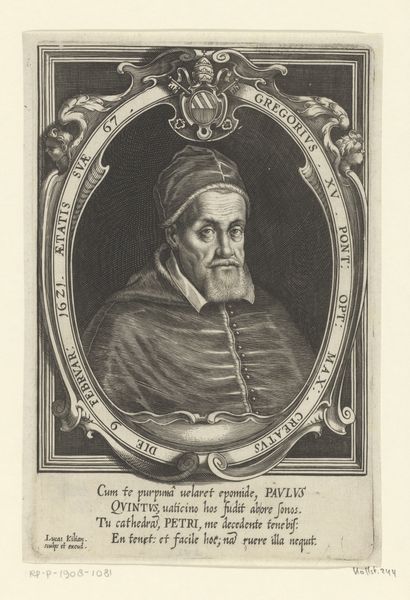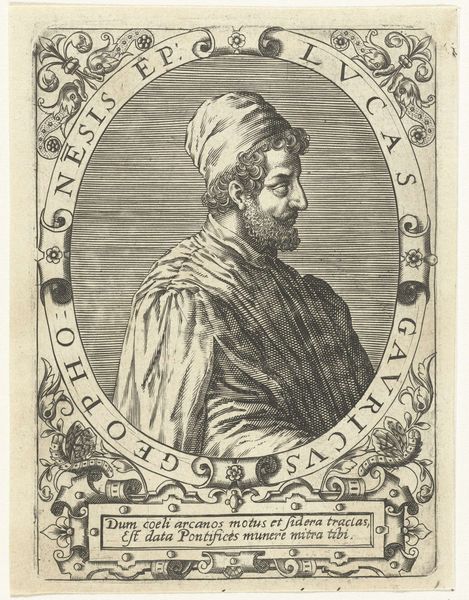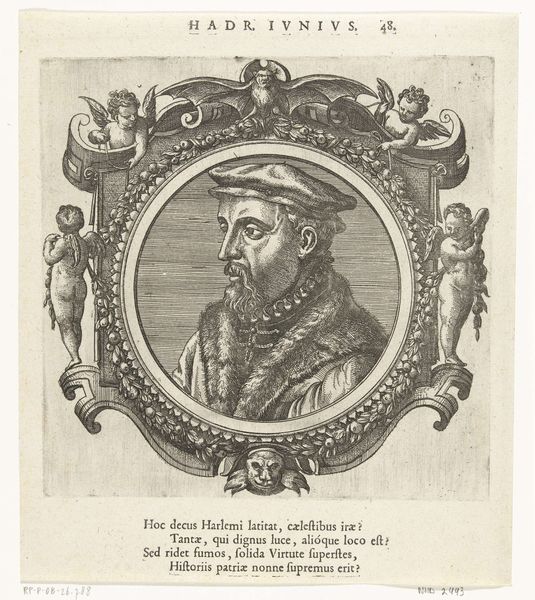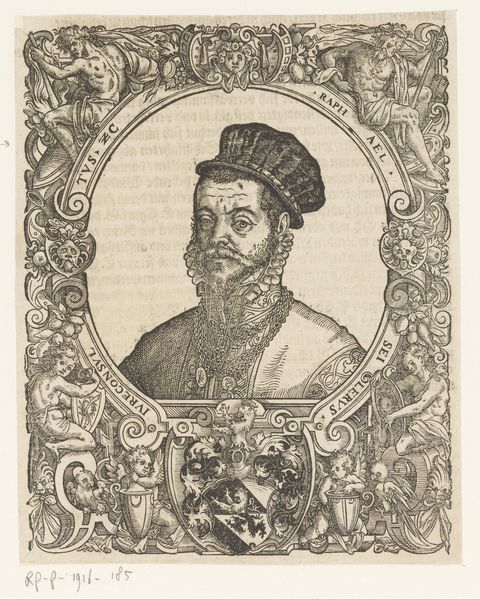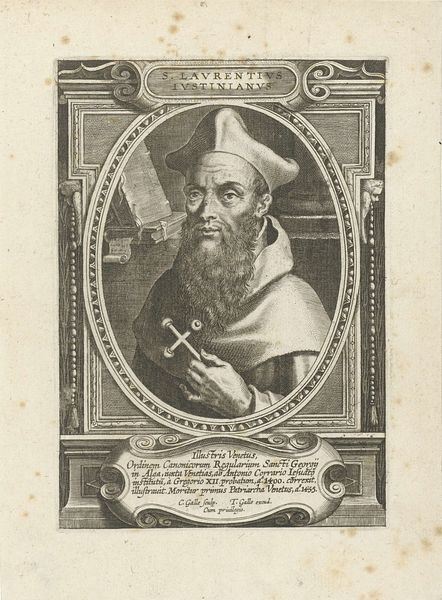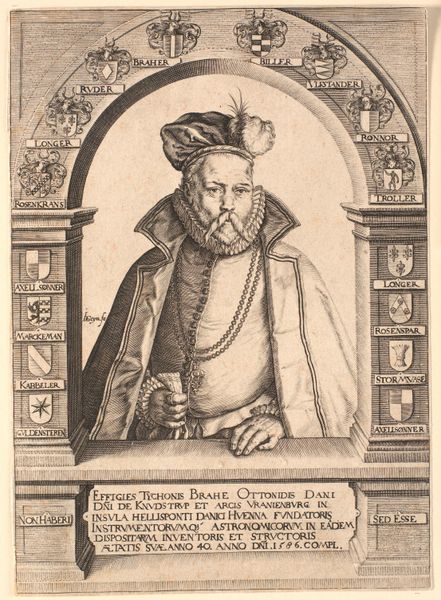
graphic-art, print, engraving
#
portrait
#
graphic-art
# print
#
old engraving style
#
11_renaissance
#
pen-ink sketch
#
line
#
islamic-art
#
engraving
Dimensions: height 157 mm, width 125 mm
Copyright: Rijks Museum: Open Domain
Curator: Here we have "Portret van de sultan Cansaves Gauris," created in 1596 by Theodor de Bry. It resides here at the Rijksmuseum as an engraving. My first thought looking at it involves situating this depiction within a historical framework of power, representation, and cross-cultural interactions during the Renaissance. Editor: Wow, look at that hat! I'm immediately drawn in by the Sultan's striking headwear and intense gaze. It’s as if he’s staring right through me, maybe questioning my very presence here contemplating his likeness so many centuries later. Curator: Exactly! It’s fascinating to consider how the artist, likely never having met the Sultan, constructed this image based on secondhand accounts and perhaps even political motivations. We must analyze it with a consciousness of the dynamics between the European gaze and the depiction of non-Western figures. The image certainly reflects particular contemporary assumptions about the East. Editor: Absolutely. You can almost feel the scratch of the engraver's tool as they carved those meticulous lines. The artist really captures a certain regality, maybe even a hint of weariness. There is a softness in those etched lines of the face, so interesting, it seems so delicately balanced against the surrounding sharp angles and flourishes. Curator: Notice how the text frames the image, further anchoring the portrait in a specific context of conquest and ambition. It speaks to Selim's impending challenge, a clear allusion to power dynamics and shifting territorial control, situating Sultan Cansaves Gauris at a crucial crossroads in Ottoman history. It also alludes to a possible conflict. Editor: And the little monkeys on either side! I wonder if their inclusion was purely decorative, a playful touch, or did the artist meant them to be ironic commentators of the depicted courtly life? Do you think it can speak to what we might think of as problematic Orientalist tropes within the European tradition? Curator: Precisely! It raises essential questions about orientalism and its influence on artistic representations, the need for a critical perspective when viewing historical images of this nature is a vital part of understanding art's intersection with colonial histories and power structures. The work invites us to think more deeply about the political ramifications embedded within visual culture. Editor: The details of his garment alone must be quite evocative in representing this time and region; fascinating when viewed through a lens that understands it not only as portraiture, but as cultural expression. Curator: Indeed. By engaging in dialogues between art history and contemporary theory, this engraving prompts a richer understanding of historical representation and cultural power, reminding us of art's inherent entanglement with politics and identity. Editor: Makes you wonder about the countless untold stories hiding in plain sight in museums like this. Thank you!
Comments
No comments
Be the first to comment and join the conversation on the ultimate creative platform.

